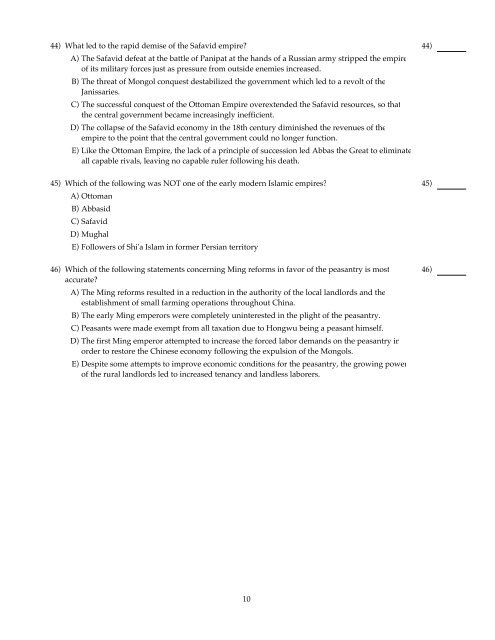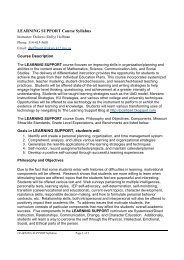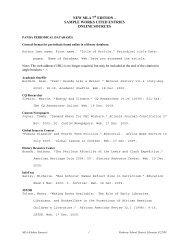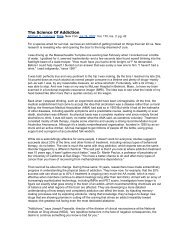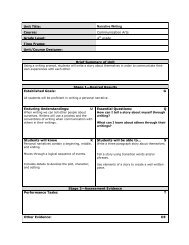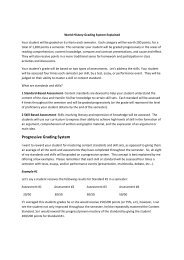Unit 4 Test_19_22
Unit 4 Test_19_22
Unit 4 Test_19_22
You also want an ePaper? Increase the reach of your titles
YUMPU automatically turns print PDFs into web optimized ePapers that Google loves.
44) What led to the rapid demise of the Safavid empire?<br />
A) The Safavid defeat at the battle of Panipat at the hands of a Russian army stripped the empire<br />
of its military forces just as pressure from outside enemies increased.<br />
B) The threat of Mongol conquest destabilized the government which led to a revolt of the<br />
Janissaries.<br />
C) The successful conquest of the Ottoman Empire overextended the Safavid resources, so that<br />
the central government became increasingly inefficient.<br />
D) The collapse of the Safavid economy in the 18th century diminished the revenues of the<br />
empire to the point that the central government could no longer function.<br />
E) Like the Ottoman Empire, the lack of a principle of succession led Abbas the Great to eliminate<br />
all capable rivals, leaving no capable ruler following his death.<br />
45) Which of the following was NOT one of the early modern Islamic empires?<br />
A) Ottoman<br />
B) Abbasid<br />
C) Safavid<br />
D) Mughal<br />
E) Followers of Shi'a Islam in former Persian territory<br />
46) Which of the following statements concerning Ming reforms in favor of the peasantry is most<br />
accurate?<br />
A) The Ming reforms resulted in a reduction in the authority of the local landlords and the<br />
establishment of small farming operations throughout China.<br />
B) The early Ming emperors were completely uninterested in the plight of the peasantry.<br />
C) Peasants were made exempt from all taxation due to Hongwu being a peasant himself.<br />
D) The first Ming emperor attempted to increase the forced labor demands on the peasantry in<br />
order to restore the Chinese economy following the expulsion of the Mongols.<br />
E) Despite some attempts to improve economic conditions for the peasantry, the growing power<br />
of the rural landlords led to increased tenancy and landless laborers.<br />
44)<br />
45)<br />
46)<br />
10


